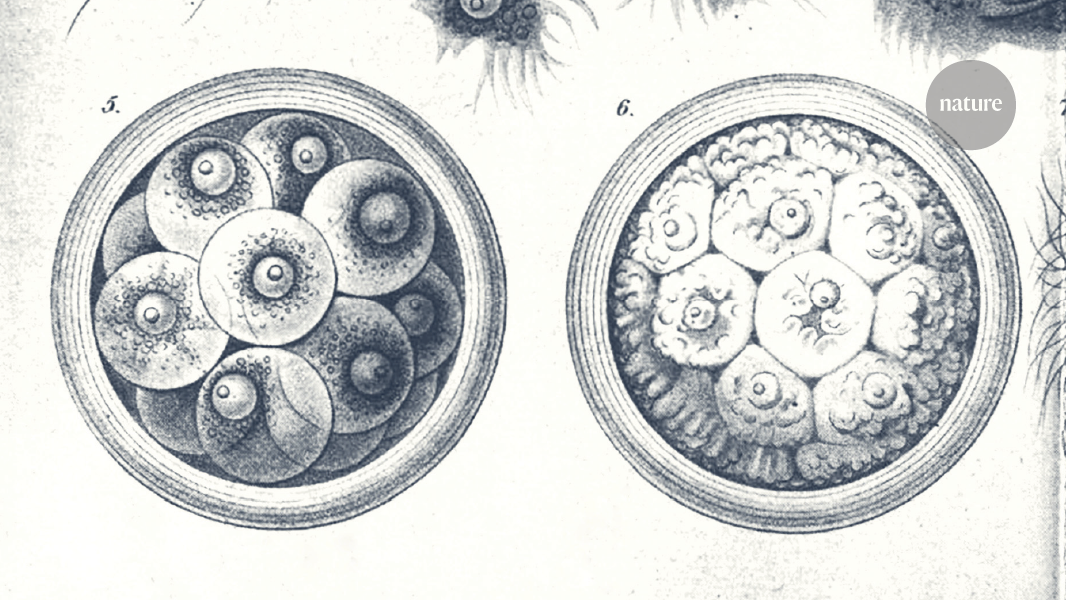Insights into the Evolutionary Origins of Embryonic Development in Animals
核心概念
New research sheds light on the evolutionary origins of embryonic development in animals, highlighting the conserved cell-division patterns across species.
要約
This brief news snippet highlights a research study published in Nature by Olivetta et al. that explores the evolutionary origins of embryonic development in animals. The research focuses on the conserved cell-division patterns observed across different animal species during embryonic development. The article suggests that these conserved patterns provide valuable insights into how embryonic development first arose in animals.
Key Highlights:
- Embryonic development in animals exhibits conserved cell-division patterns.
- These patterns are consistent across various species, suggesting an ancient evolutionary origin.
- The research by Olivetta et al. provides new understanding of how embryonic development emerged in animals.
要約をカスタマイズ
AI でリライト
引用を生成
原文を翻訳
他の言語に翻訳
マインドマップを作成
原文コンテンツから
原文を表示
www.nature.com
Clues to the origin of embryonic development in animals
統計
引用
抽出されたキーインサイト
by Thibaut Brun... 場所 www.nature.com 11-06-2024
https://www.nature.com/articles/d41586-024-03468-1
深掘り質問
How might understanding the evolutionary origins of embryonic development inform research on developmental disorders?
Understanding the evolutionary origins of embryonic development can significantly inform research on developmental disorders in several ways:
Identifying Genetic and Molecular Mechanisms: By studying conserved cell-division patterns and their underlying genetic regulation across different species, researchers can pinpoint crucial genes and molecular pathways essential for normal development. Disruptions in these conserved elements, whether through mutation or environmental factors, are likely to have significant consequences and could be at the root of various developmental disorders.
Tracing Evolutionary Origins of Vulnerabilities: Evolutionary developmental biology ("evo-devo") allows us to understand why certain developmental stages or structures might be particularly vulnerable to disruption. For instance, if a developmental process evolved recently or involves complex interactions, it might be more susceptible to errors. This knowledge can guide researchers to focus on specific developmental windows or pathways when investigating the causes of disorders.
Developing Targeted Therapies: Insights into the evolutionary origins of developmental processes can pave the way for more targeted therapeutic interventions. By understanding the fundamental mechanisms that govern cell fate, differentiation, and morphogenesis, researchers can develop strategies to correct developmental errors, stimulate tissue regeneration, or even prevent birth defects.
Comparative Model Systems: Studying embryonic development in diverse organisms, especially those with simpler developmental processes or shorter lifespans, can provide valuable insights into human developmental disorders. These model systems can be used to test hypotheses, identify potential therapeutic targets, and study the effects of environmental factors on development in a more controlled and ethical manner.
Could there be alternative explanations for the observed conserved cell-division patterns in animals, beyond a shared evolutionary history?
While a shared evolutionary history is the most parsimonious explanation for conserved cell-division patterns, alternative explanations could include:
Convergent Evolution: Similar environmental pressures or functional constraints could lead to the independent evolution of similar cell-division patterns in unrelated lineages. This is more likely for simpler patterns, while complex, multi-step processes with similar details across diverse organisms strongly suggest common ancestry.
Physical Constraints: The fundamental physical laws governing cell division, growth, and mechanics might limit the possible arrangements and patterns of cells during development. Certain configurations might be inherently more stable or efficient, leading to convergent evolution driven by physical rather than historical constraints.
Limited Data: Our current understanding of cell-division patterns is based on a limited sampling of the vast diversity of animal life. It's possible that as we study more organisms, we might discover greater variation than currently appreciated, challenging the universality of some patterns.
It's important to note that these alternative explanations are not mutually exclusive with shared evolutionary history. Multiple factors likely contribute to the observed patterns, and disentangling their relative contributions requires careful comparative analysis and experimental validation.
If we can fully understand and potentially manipulate embryonic development, what ethical considerations should guide our application of this knowledge?
The ability to manipulate embryonic development presents profound ethical considerations that necessitate careful deliberation and societal dialogue. Some key ethical considerations include:
Unintended Consequences: Altering embryonic development could have unforeseen and potentially harmful consequences for the organism, both immediately and in later life. The interconnectedness of developmental processes means that even small changes can have cascading effects, making it crucial to proceed with extreme caution.
Informed Consent: Manipulating human embryos raises complex issues of consent, particularly when dealing with germline modifications that could be passed down to future generations. Establishing clear guidelines and obtaining informed consent from all stakeholders is paramount.
Equity and Access: Access to technologies that could potentially enhance or modify human development should be equitable and not exacerbate existing social disparities. Preventing the creation of a "genetic elite" and ensuring that these technologies benefit all members of society is crucial.
Human Dignity: The potential to manipulate human development raises fundamental questions about the meaning of human dignity and the limits of technological intervention in natural processes. A careful balance must be struck between scientific progress and respecting the intrinsic value of human life.
Slippery Slope Argument: Allowing certain interventions, even for seemingly noble purposes like preventing disease, could lead to a slippery slope where the boundaries of acceptable manipulation become increasingly blurred. Establishing clear ethical guidelines and engaging in ongoing public discourse is essential to prevent such a slide.
Addressing these ethical considerations requires a multidisciplinary approach involving scientists, ethicists, policymakers, and the public. Open and transparent dialogue, coupled with robust regulatory frameworks, is essential to ensure that the application of this knowledge aligns with our values and benefits humanity as a whole.
0
